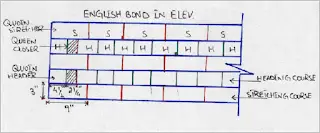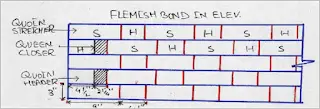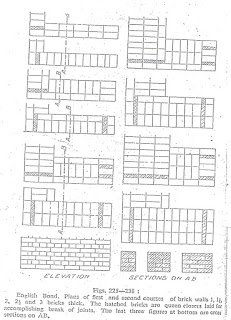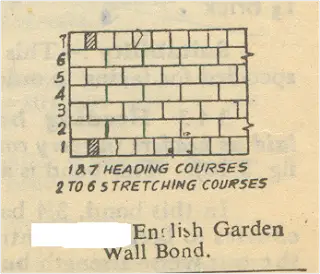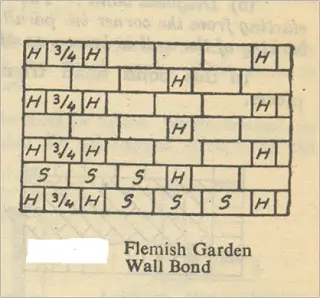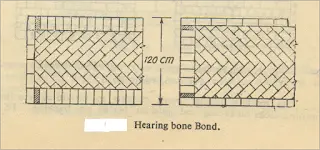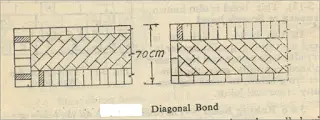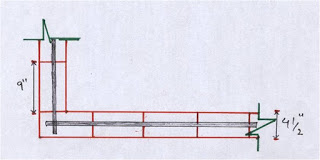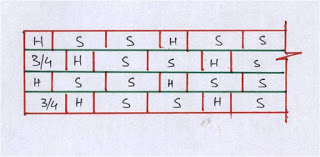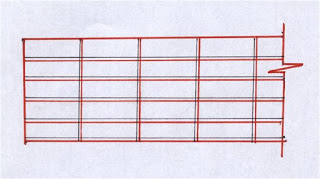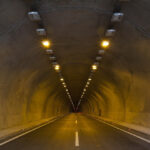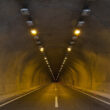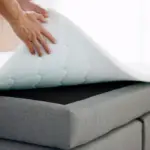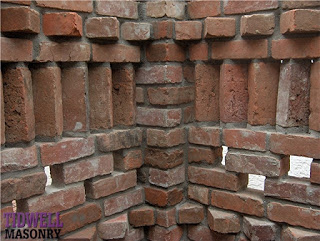 |
| Types of Bonds used in Masonry |
OBJECTIVES OF BONDS
A bond is provided to achieve the following objectives:
(a) The primary objective of providing a bond is to break the continuity of the vertical joints in the successive courses both in the length and thickness of masonry structure. As a result, the structure will act as a bounded mass and its load will be transmitted uniformly to the foundations.
(b) To ensure longitudinal and lateral strength of the structure.
(c) To provide pleasing appearance by laying bricks symmetrically.
(d) To do masonry work quickly by engaging more masons on a job at a time.
Types of Bonds
(1) ENGLISH BOND
The bond, in which headers and stretchers are laid in alternate courses, is called \”English bond\”.
The following are the salient features of English bond:
(i) Headers and stretchers are laid in alternate courses.
(ii) In each heading course, a queen closer is placed next to quoin header and the remaining bricks are laid as headers.
(iii) Every alternate header in a course comes centrally over the joint between two stretchers in the course below, giving an approximate lap of 2 ¼ in.
(iv) The same course will show headers or stretchers on face and back, if the thickness of the wall is an even multiple of half bricks (e.g. 9 in, 18 in, 27 in, etc.)
(v) The same course will show headers on the face and stretchers on the back and vice versa, if the thickness of the wall is an odd multiple of half brick. (13 1/2 in , 22 1/2 in , etc )
(vi) The middle portion of the thicker walls consists entirely of headers.
(vii) Every transverse joint is continuous from face to face.
(2) FLEMISH BOND
The bond, in which headers and stretchers are laid alternately in the same course, is called \”Flemish bond\”.
The following are the salient features of Flemish bond:
(i) Headers and stretchers are laid alternately in the same course.
(ii) Every header in each course lies centrally over every stretcher of the underlying course.
(iii) In every alternate course a queen closer is placed next to quoin header, so as to provide a lap of approximately 2 1/4 in.
(iv) Brick bats are to be used in walls having thickness equal to an odd multiple of half brick.
|
Sr No.
|
English Bonds
|
Flemish bond
|
|
1
|
This bond consists of headers and stretchers laid in alternative courses.
|
This bond consists of headers and stretchers laid alternatively in each course.
|
|
2
|
It is strongest of all the bonds.
|
It is less strong for walls having thickness more than 13 ½ inches.
|
|
3
|
It provides rough appearance especially for one brick thick walls.
|
It provides good appearance for all thickness of walls.
|
|
4
|
There are no noticeable continuous vertical joints in the structure built in this bond.
|
There are partly continuous vertical joints in the structure built in this bond.
|
|
5
|
Much attention is not required in providing this bond.
|
Special attention is required in providing this bond.
|
|
6
|
Progress of work is more.
|
Progress of work is less.
|
|
7
|
It is costly because the use of brick bats is not allowed.
|
It is economical because brick bats are allowed for forming this bind.
|

